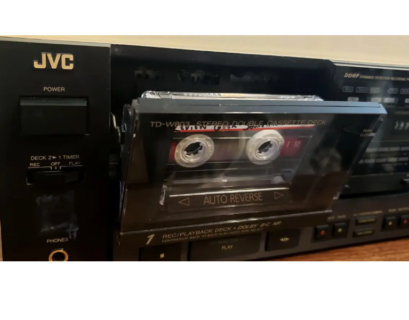It’s the time of year for saving money!
 In the January 9th edition of the New York Times Virginia Heffernan wrote an article about headphones called “Against Headphones.” Her lead states, “One in five teenagers in America can’t hear rustles or whispers, according to a study published in August in The Journal of the American Medical Association. These teenagers exhibit what’s known as slight hearing loss, which means they often can’t make out consonants like T’s or K’s, or the plinking of raindrops…” Her solution was, “Make it a New Year’s resolution, then, to use headphones less.” I think the problem isn’t so much headphones use, but the kind of headphones and how they are used that’s the real problem here.
In the January 9th edition of the New York Times Virginia Heffernan wrote an article about headphones called “Against Headphones.” Her lead states, “One in five teenagers in America can’t hear rustles or whispers, according to a study published in August in The Journal of the American Medical Association. These teenagers exhibit what’s known as slight hearing loss, which means they often can’t make out consonants like T’s or K’s, or the plinking of raindrops…” Her solution was, “Make it a New Year’s resolution, then, to use headphones less.” I think the problem isn’t so much headphones use, but the kind of headphones and how they are used that’s the real problem here.
Most young people use the headphones, or more properly called ear-buds, that came with their portable devices. The vast majority of ear-buds fit badly. The unfortunately ubiquitous stock Apple ear-buds are the most egregious offenders. Has any normal human ever managed to make a pair stay in their ears for more than ten seconds at a stretch?
Because they fit so badly, ear-buds do a terrible job of transmitting the full-frequency of sounds to your ears, especially lower frequency sounds. The natural human response to inarticulate or bass-shy sound is to make it louder. That makes music sound clearer, but it often puts the SPL levels well above the minimum guaranteed to produce long-term hearing loss. Buying and using ear-buds that correctly fit would go a long way toward reducing this problem. Good in-ear headphones that make a complete acoustic seal in your ears make it so you don’t need to play the music as loudly to hear it clearly and with enough bottom end to generate booty shaking.
A second reason that many young people listen to music through their ear-buds at too high a level is more difficult to fix. The pop music that comes from most download and streaming sites is in the form of a highly compressed MP3 music file. We audiophiles know that MP3 music lacks much of the essential detail and low-level information that makes music compelling. In an often-futile attempt to capture the emotional content they KNOW is in a song, listeners turn up the volume. Game over. Hearing loss wins. Unfortunately a low-resolution MP3 at 105 dB is just as soulless as it was at 70 db.
While there are many headphone options from companies including Ultimate Ears, Shure, Etymotic, and Monster that can solve the ear-bud fit issue, providing an alternative to low and medium resolution MP3 files is more daunting. One solution is to provide the young person in your home with a higher resolution alternative to their low-rez downloads. Let them hear the difference for themselves. Buy a CD. Rip it. And let your budding music-lover hear what it sounds like in comparison to their downloaded version. I guarantee you that even that one-in-five who’s suffered hearing-loss will be able to hear the difference.
So my New Year’s resolution isn’t to “use headphones less,” but to use headphones that fit well and listen to full-resolution sources. That way I can listen at lower volumes while still connecting with the music, and keep on listening for many years to come.






